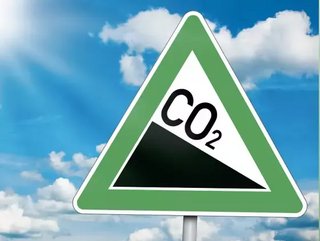Strong policies 'missing' on transport decarbonisation

Technology alone will not curb the 25% of greenhouse gas emissions in the EU for which transport is responsible and the missing links are strong policies to encourage not only accelerated technology shifts but also paradigm changes in behaviour, according to a recent European Academies Science Advisory Council (EASAC) report.
The transport sector is responsible for nearly a quarter of the EU’s carbon dioxide emissions, and its emissions are rising faster than in any other sector. EASAC shows that current EU policies are unlikely to deliver emission reductions quickly enough to limit global warming to less than 2°C.
“One option that policymakers must urgently put on the table is avoiding and containing the demand for motorised transport”, says Professor George Giannopoulos, Member of EASAC’s Transport Working Group.
William Gillett, EASAC’s Energy Programme Director, added that European policies in the transport sector focus on promoting low-carbon fuels or electric cars.
"But these efforts are counteracted by the ever-growing popularity of heavier cars with more powerful motors. This trend is offsetting all fuel-efficiency improvements and the effect of an increased share of electric vehicles,” he said.
In 2020 sales of fuel-hungry SUVs grew to a whopping 42% of the global car market. Even equipping these with electric powertrains would not solve the problem: The production of bigger cars has a much heavier impact on resources, and they require significantly more battery power. "We have to go for a much broader set of regulations and incentives," he said.
In a joint event at the European Commission’s digital pavilion during COP26, European scientists and researchers, together with technology developers and industry pioneers, will present and discuss challenges as well as policies and regulations that could help close the gap between targets and actual transport emission trends.
The European science academies will address the potential for reducing GHG emissions by avoiding road transport, shifting passengers and freight onto more sustainable means of transport, and improving the emissions performance of road vehicles.
The EASAC reports makes 12 conclusions:
- Avoid and contain the demand for motorised transport, and reverse EU policy that ‘curbing mobility is not an option‘
- Shift passengers from private cars to public transport services
- Shift more freight off the road and onto railways or waterways
- Improve/introduce regulations during the transition period to limit consumer demand for oversized vehicles and oversized ICEs
- Improve the average emissions performance of all passenger cars and LDVs during the transition period
- Improve/increase the rate of market penetration of BEVs and PHEVs for passenger transport as soon as possible
- Improve/increase the penetration rate of low-carbon electricity generation in the grid urgently
- Improve and adapt the design and regulation of electricity markets and tariffs that apply to electric vehicles
- Improve and simplify guidance on the use of biofuels, biogas, natural gas and methane for transport
- Improve/increase resources for the development of technologies for producing synthetic fuels
- Improve/increase the levels of investments in ICT and autonomous vehicles
- Improve/strengthen preparations for long-term emission reductions by making long-term policy commitments to invest in innovation, jobs, skills and interdisciplinary research
Suppliers are starting to take the lead with EIT InnoEnergy and Volkswagen AG recently announcing a strategic partnership to develop technologies and models which will contribute to the decarbonisation of transport and accelerate electromobility.
Roberto Speicys, co-founder and CEO of Scipopulis, a green4T company, will present Trancity, a monitoring platform that supports management, planning and operation of public transport systems, at COP26.
"Transportation accounts for 25% of gas emissions, which can be reduced by encouraging the use of public transport and the development of electric mobility. Using renewable energy also results in more profitable operations in the long run. It is imperative to discuss this topic at COP26 to achieve the goals proposed by the UN," said Speicys.
According to the Global Infrastructure Outlook, more than $2 trillion of transport infrastructure investments will be needed each year until 2040 to fuel economic development. Rapid urbanisation, surging demand for freight services, and the COVID-19 response stimulus plans in many countries are putting pressure on stakeholders to step up the pace of infrastructure development.






